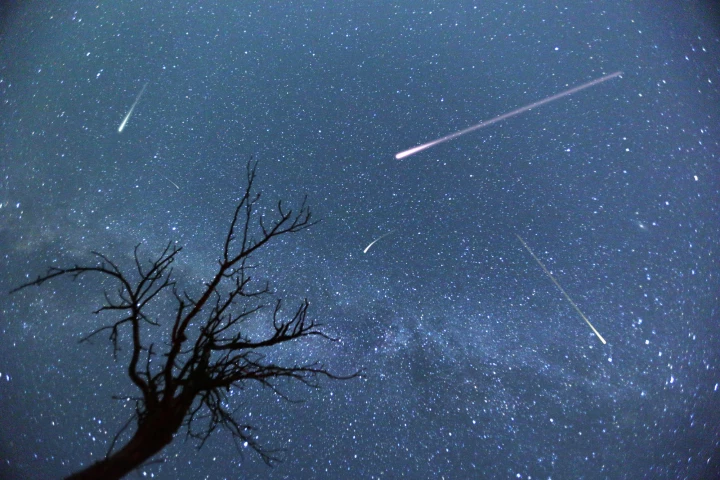Meteor
-
Meteor showers are beautiful astronomical phenomena, but they can be fickle. Now a Japanese company is planning to put on artificial shooting star shows on demand with the Sky Canvas project. And there might be some scientific benefits to it as well.
-
Meteorites often burn up in Earth’s atmosphere, but a fireball over Canada last year may shake up our understanding of the solar system. Scientists traced its origins back to a distant cloud of comets that wasn’t thought to host any rocky material.
-
Despite making up 85% of the total mass in the universe, dark matter eludes detection. A new study proposes a unique way to look for it using the Earth’s atmosphere as a giant detector for dark matter particles streaming through the air like meteors.
-
By analyzing data from radar and optical telescopes, scientists have given radar the ability to make observations of meteors that burn up in the Earth's atmosphere that have previously only possible using optical telescopes.
-
Martian clouds could have an alien origin, according to a newly-published paper. The study suggests that mid-level clouds form above the Red Planet due to a phenomenon called "meteor smoke," which occurs when space debris is shredded upon entering the Martian atmosphere.
-
An international team has found a massive collection of fossils of fish and other animals in North Dakota that were killed by a seismic sea wave and a shower of burning glass beads less than an hour after the asteroid strike 66 million years ago off the shore of what is now Yucatan.
-
NASA has released images of a meteor exploding over the Bering Sea last December with a force over 10 times greater than the atomic bomb that destroyed Hiroshima in 1945. The giant fireball exploded 16 mi (26 km) above the Earth's surface and is estimated to have released 173 kilotons of energy.
-
Scientists have found an ancient meteor crater under the Greenland ice cap that's larger than Paris. Discovered using ground-penetrating radar, the possibly three-million-year-old impact crater is 19 miles in diameter, about 1,000 ft deep, and is buried under 3,200 ft of glacial ice.
-
Woodleigh Crater in Western Australia is one of the largest on Earth. But now, researchers from Curtin University have discovered new evidence that the crater could be bigger than previously thought – thanks to the presence of one of the rarest minerals ever found.
-
Canon first revealed its ultrahigh-sensitivity CMOS image sensor back in 2010, where its gargantuan proportions were given as 202 x 205 mm. Now the sensor has been used to record video of meteors at a level "so dark that image capture had not been possible until now."
-
Meteors are nature's fireworks, but mankind is catching up as the artificial shooting star project Sky Canvas attempts to recreate colorful cosmic showers. Using miniature satellites that shoot special alloy ball bearings, the showers can be created to order over any spot on Earth.
-
A new study suggests that we may be searching in the wrong place for signs of life on Mars when we examine rocks excavated by meteor impacts for organic compounds.
Load More











